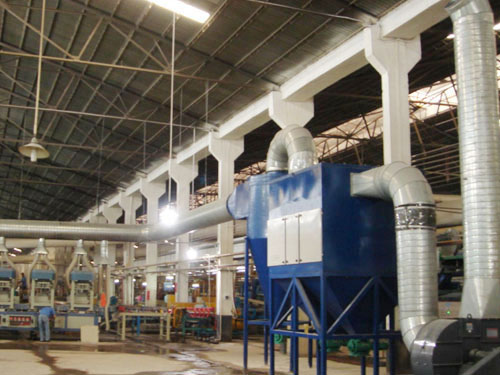SURVIVAL THROUGH QUALITY
PRODUCT CENTER
-
Pulse dust collector
-
Mine dust collector
-
Boiler dust collector
-
Metallurgical dust collector
-
Carbon plant dust collector
-
Chemical dust collector
-
Rubber dust collector
-
Woodworking dust collector
-
Single machine dust collector
-
Static electricity Dust collector
-
Cyclone dust collector
-
Wet dust collector
-
Filter cartridge dust collector
-
Insert valve (gate valve)
-
Ventilation butterfly valve (cold air valve)
-
Spiral conveyor (auger)
-
Scraper conveyor
-
Dust humidifier
-
Bucket elevator
-
Ash discharge valve
-
Material Handling Equipment
-
Wet scrubber
-
Dust collector
-
Dust removal filter bag
-
Dust removal bag cage
-
Polishing platform
-
Waste gas treatment equipment
-
Electric control cabinet
-
Fan
-
Smoke welding machine
-
Liquid level switch
-
Dust removal filter element
-
Aeration cushion
-
Sweeper
-
Dust suppression device
-
Solenoid valve

Dust collector in woodworking workshop
The dust collector in the woodworking workshop has the characteristics of low resistance, dust removal, large processing air volume, stable performance, small footprint, simple structure, practicality, and low cost. After the dusty gas enters from the upper air inlet of the ash hopper, under the action of the wind deflector, the airflow moves in the opposite direction and the flow rate decreases. Some large particles of dust are separated and fall into the ash hopper due to the inertia force. Dust containing gas enters the middle box and is filtered and purified by a filter bag. Dust is trapped on the outer surface of the filter bag, and the purified gas enters the upper box through the filter bag opening and is discharged through the air outlet.
The design concept of the dust collector in the woodworking workshop is based on the principle of saving investment as much as possible. Due to the high concentration of dust generated by woodworking equipment during the processing, the commonly used pulse bag dust removal technology in China is adopted to achieve the goal of recovering dust and purifying exhaust gas, so that all emission indicators meet the emission requirements.
The dust collector in the woodworking workshop is suitable for various woodworking machinery and equipment such as four sided planers, sanding machines, sawing machines, slicing machines, bar mills, etc. It can be used for single machine dust removal or system dust removal. Single machine dust removal is mainly used for single woodworking machinery dust removal, with the characteristics of flexibility and convenience. The system dust removal is used for the dust removal of woodworking machinery production lines, which has the characteristics of economy, practicality, and aesthetics. It does not affect production operations and can achieve ideal dust removal effects. Bag dust collector is currently the dust collector used for dust removal, and the dust removal effect can be achieved. Suitable for collecting dust from solid wood shavings, artificial board particles, and fibers. The pulse bag filter in the air box uses a filtering method to block the dust particles in the dusty gas and leave them on the fiber fabric of the cloth bag, thereby purifying the gas. Suitable for capturing non cohesive and non fibrous dust, compared to general dust collectors, the dust removal efficiency can be stable at or above, and can remove particles of about 1 micron. This dust collector has the advantages of simple structure, low investment cost, simple operation, low technical requirements for management and maintenance.
In order to meet the increasingly strict requirements of labor protection, environmental protection, and product processing accuracy, woodworking manufacturing enterprises deal with the dust generated during the production process. The large amount of fine dust and sawdust generated in the production process of woodworking manufacturing not only adhere to the surface of equipment and workpieces, affecting the processing quality, causing workpiece scrapping or frequent equipment failures, but also polluting the working environment, leading to silicosis. Therefore, the ventilation and exchange of air in the workshop are carried out to timely remove the generated dust and purify the dusty air to maintain the cleanliness of the equipment and workpiece surfaces.

